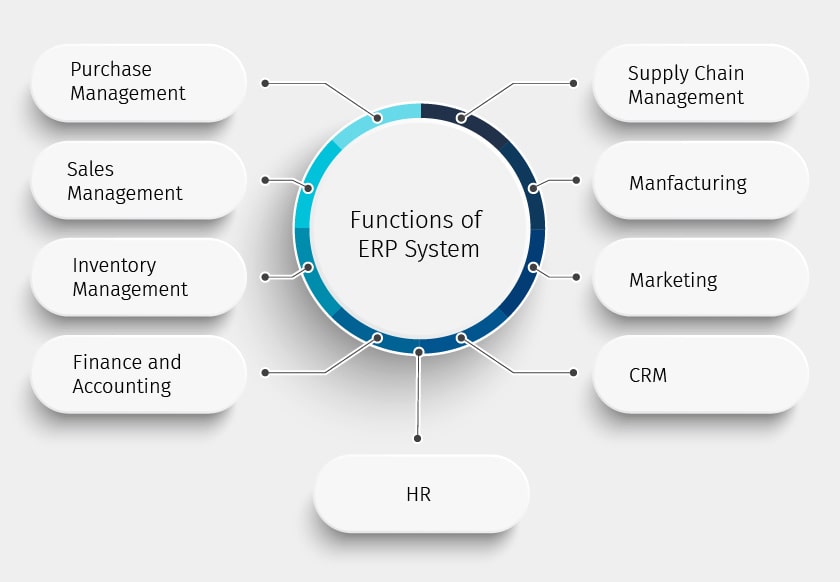Erp implementation process functions steps successful system systems software tally solutions
Today, I want to talk about the importance of Enterprise Resource Planning (ERP) systems and the process of implementing them successfully. ERP systems play a vital role in streamlining business operations and enhancing overall efficiency. With that being said, let's delve into this topic further.
What is an Enterprise Resource Planning (ERP) System?
An ERP system is a software solution that integrates and manages various business functions, such as finance, human resources, inventory, manufacturing, and customer relationship management. It provides a centralized database that enables real-time communication and data sharing between different departments within an organization.
Implementing an ERP system can significantly benefit an organization. It simplifies processes, improves productivity, and enhances decision-making by providing accurate and up-to-date information. Moreover, it eliminates the need for disparate software applications and manual data entry, thereby reducing errors and saving time.
ERP Implementation Process - 10 Steps to Implement ERP System Successfully
Successful ERP implementation requires careful planning and execution. Here are the ten essential steps that should be followed:

- Define objectives and set realistic goals: Clearly identify the purpose of implementing an ERP system and set achievable goals.
- Select the right ERP software: Research various ERP solutions and choose the one that aligns with your organization's requirements and budget.
- Build a competent project team: Assemble a team of experts who will lead the ERP implementation process.
- Map existing processes: Understand your current workflows and map them to the functionalities offered by the ERP system.
- Design and configure: Customize the ERP system to match your organization's specific processes and requirements.
- Migrate data: Transfer your existing data into the new ERP system, ensuring accuracy and data integrity.
- Train employees: Provide comprehensive training to your staff to ensure they can effectively utilize the ERP system.
- Test and evaluate: Conduct thorough testing and evaluation to identify and resolve any issues before going live.
- Go live: Implement the ERP system across your organization and monitor its performance.
- Continuous improvement: Regularly evaluate the ERP system's performance and make necessary improvements to maximize its benefits.
By following these ten steps, you can increase the likelihood of a successful ERP implementation and maximize the return on investment for your organization.
In conclusion, implementing an ERP system can revolutionize the way your business operates. From streamlining processes to improving decision-making, an ERP system is a powerful tool that enhances overall efficiency. By understanding the implementation process and following the necessary steps, you can ensure a successful ERP implementation for your organization's future success.